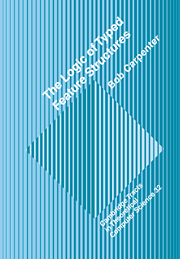 The Logic of Typed Feature Structures
The Logic of Typed Feature Structures 12 - Infinite Feature Structures and Domains
Published online by Cambridge University Press: 12 October 2009
Summary
In this chapter we generalize our notion of feature structure to allow for the possibility of having countably infinite collections of nodes. When we considered algebraic models in the last chapter, we implicitly allowed models with objects from which infinitely many distinct objects were accessible by iteratively applying feature value functions. In the case of feature structures as we have previously taken them, the set of substructures of a feature structure was always in one-to-one correspondence with the nodes of the feature structure and hence finite. In the case of finite feature structures, we were guaranteed joins or unifications for consistent finite sets of (finite) feature structures. We also saw examples of infinite sets of consistent finite feature structures which did not have a finite least upper bound. When we allow for the possibility of countably infinite feature structures, we have least upper bounds for arbitrary (possibly infinite) consistent sets of (possibly infinite) feature structures. In fact, the collection of feature structures with countable node sets turn out to form a predomain in the sense that when we factor out alphabetic variance, we are left with an algebraic countably based BCPO. Luckily, in the feature structure domain, the compact domain elements are just the finite feature structures, thus giving us a way to characterize arbitrary infinite feature structures as simple joins of finite feature structures. One benefit of such a move is that infinite or limit elements in our domains provide models for non-terminating inference procedures such as total type inference over an appropriateness specification with loops or extensionalization when non-maximal types are allowed to be extensional.
- Type
- Chapter
- Information
- The Logic of Typed Feature StructuresWith Applications to Unification Grammars, Logic Programs and Constraint Resolution, pp. 167 - 182Publisher: Cambridge University PressPrint publication year: 1992
